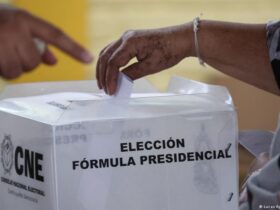In Tehran, the price of a loaf of bread is 100,000 riyal. Or – should it be 10 toons now? Or 10,000 toons (Rafli $ 1)?
For ordinary Iranians, a single toon means 10 rials. But the government tried to streamline the currency, even the basic work of buying groceries could soon become a misleading confusion of numbers.
Efforts to present Toman as a currency were proposed in 2016 and launched in 2021. The plan was to remove four zeros compared to the prices of riyal, and the official riyal banknotes have been rebuilt. Color color color color to help people adjust to change.
Although the plan looked good on paper, economic reality has not changed for most people. And then currency reform stopped under the administration of late President Ebrahim Raisi.
His successor, Masaud Peseshkian revived the initiative last month. The Parliament of Iran is due to constant voting on a bill to renew the process in dialect to curb inflation and economic instability, although the vote date has not been fixed yet.
Structural reforms versus placebo effects
Initly, the purpose of removing zero from the currency was to simplify the transaction and improve confidence in Iran’s financial system.
Supporters argued that it would reduce the psychological effects of inflation. But inflation has not ended, and the public’s confidence has continued since 2021.
For the economic journalist based in London, Arezoo Karimi said the remedy is “relative ineffective”.
He said, “Removing zero from the national currency has no effect on the fundamental issues of the economy, discovery in the form of inflation, internal value of money, liquidity, GDP and unemployed,” he told DW. “Nor does it want in future.”
The costly expensive expensive in Rial wants to be expensive in Tomans
Since the revaluation of US sanctions in 2018, Rial’s value has exceeded 80% against the dollar.
This devaluation has promoted hyperprinting, which costs the cost of essential commodities such as food and medicine in the last one year. Many Iranians are struggling to meet basic needs as wages fail to keep pace with rising prices.
“Last month, I spent half my salary only on grocery items,” said Pharesid, a shopkeeper from Tehran. ,
Who got the currency improvement correct?
Currency improvements to combat inflation are not new, and in many countries there are similar ventures like stabilizing their iconomies in the past. But thesis correction often achieves mixed results, with success over extensive fiscal measures and structural changes.
What was among one of the most serious hyperflation crises in Germany history in the 1920s.
Then, the Republic of Weimar introduced the Rentonmark to change the old mark, removing 12 zeros from the currency.
This remedy restored some public confidence, but the long -term success of the new mark is largely attracted to fiscal discipline, including the International debt and stabilization measures supported by the United Nations.
Recently, in Turkey, the authorities removed six zeros from Lira in 2005, followed by stringent fiscal policies, discovered as the budget deficit and controlling inflation. Once again, its currency improvement depended on other factors to stabilize the economy.
In the 1990s, Brazil introduced a new currency, real, ie it was combined with strict fiscal policies, which aims to control inflation.
Improvement including measures such as reducing public sector deficiency, harassing the supply of money and implementing price stabilization plans. Brazil’s success is often as a model for managing inflation that addresses both inflation and economic development.
Who got the currency improvement?
But history shows that currency improvement may end badly. For example, the government removed the zero from the currency in Zimbabwe in the early 2000s, but did not address the Underdress underdress and discovered as political instability and corruption. Similar redistribution efforts failed to bear fruit in Venezuela.
Therefore Argentina has experienced many currency crisis through IT history, the government has responded to measures to address inflation and stabilize the economy.
While Argentina has sometimes removed zero from her peso, the thesis has failed to prevent bees in the long run. The South American country still suffers from structural issues, which discovers the chronic deficit, huge dependence on the US dollar and political instability.
Iran’s system ‘Old’
Tehran-based economist Kamran Nadri said, “Iran’s dependence on oil revenue and continuous restrictions by Venezuela are facing challenges.”
“Without systemic reforms, currency changes will not work alone.”
Both Venezuela and Iran have been implemented by the US. This means that they have banned access to global markets, harassing foreign investment and obstructing modernization efforts in important areas such as banking and oil.
Although Iran has explained close economic relations with China and Russia, Thesis relations have not given compensation for the impact of restrictions.
“Our financial system is old,” said Nadri. “It is almost impossible to attract restrictions to forgent capital, which is essential for development.”
Young people leave Irani
Mauhile is a mountain between Iranians. A recent survey found that 75% of the reactions believe that currency reform has failed to improve their economic condition. Many young, educated people are leaving the country, increasing a brain drain that threatens Iran’s long -term development.
A university graduate told DW, “I am saving every Toman to go abroad.” “There is no future here.”
Experts agree that Iran will need more than cosmetic fixes to move forward, including diversity in the economy, dealing with corruption and improving transparency. Additionally, reducing restrictions through diplomatic negotiations, the 2015 can help stabilize the economy, discovering the nuclear deal.
Economist Nadari warned, “Without a coordinated strategy, which addresses both internal and external challenges, we will return here over a few years.”
Edited by: Darko Jenjeevic






Leave a Reply